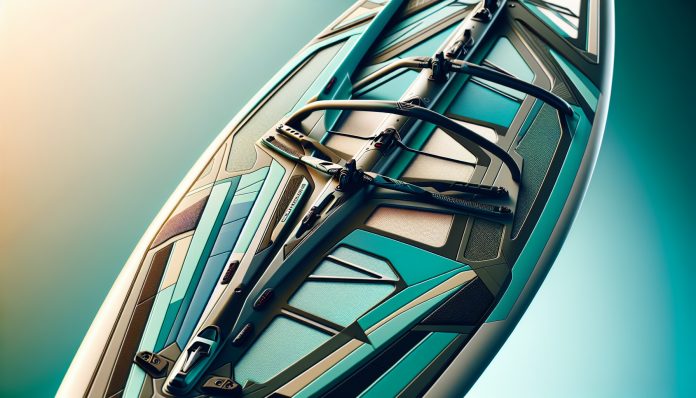Are you ready to embark on an exciting adventure in the world of windsurfing? Look no further! In this article, we will guide you through the essentials of this exhilarating water sport, from the basic equipment you’ll need to the techniques that will have you gliding across the waves in no time. Get ready to feel the wind in your hair and the thrill of the open water as we dive into the world of windsurfing.
Equipment for Windsurfing
Windsurfing is an exhilarating water sport that combines the elements of sailing and surfing. To fully enjoy this activity, it is essential to have the right equipment. Choosing the proper board, selecting the right sail size, and having essential safety equipment are key factors in ensuring a successful and enjoyable windsurfing experience.
Choosing the Right Board
The choice of board is crucial in windsurfing, as it determines your stability, control, and overall performance on the water. There are various types of boards available, including longboards, shortboards, freestyle boards, and wave boards. It is important to consider your skill level, body weight, and the type of conditions you will be windsurfing in when selecting the right board.
For beginners, a longer and more stable board, such as a longboard, is recommended. This type of board provides better balance and maneuverability, making it easier to learn and progress in the sport. As you gain experience and confidence, you can transition to a shorter and more specialized board that suits your style and preferences.
Selecting the Proper Sail Size
The sail size is another important factor to consider when windsurfing. The size of the sail directly affects your speed, control, and stability on the water. The general rule of thumb is to choose a larger sail for lighter wind conditions and a smaller sail for stronger winds.
For beginners, a larger sail with more surface area is recommended, as it provides more power and stability. As you become more proficient in windsurfing, you can gradually transition to smaller sails to improve your maneuverability and speed. It is important to choose a sail size that matches your skill level and the wind conditions you will be windsurfing in.
Essential Safety Equipment
Safety should always be a top priority when engaging in any water sports activity, including windsurfing. Having the appropriate safety equipment not only ensures your well-being but also provides peace of mind during your windsurfing sessions.
One of the most essential safety equipment for windsurfing is a properly fitted personal flotation device (PFD) or life jacket. This ensures that you stay afloat in case of an unexpected fall into the water. Additionally, a helmet is recommended to protect your head from any potential impact with the board or other objects.
Other safety equipment to consider includes a leash, which keeps your board attached to you in case of a fall, and a whistle or signaling device to alert others of your presence. It is also advisable to have a basic first aid kit on hand in case of any minor injuries.
Preparing for Windsurfing
Before heading out onto the water, proper preparation is key to ensuring a safe and enjoyable windsurfing experience. Checking wind conditions, choosing the right location, and wearing the appropriate clothing and accessories are important steps in getting ready for your windsurfing adventure.
Checking Wind Conditions
Wind conditions play a crucial role in the quality of your windsurfing experience. Before heading out, it is essential to check the wind forecast for the day. Pay attention to the wind speed and direction, as these factors greatly affect your ability to sail and maneuver on the water.
Windsurfing is best enjoyed with a wind speed ranging from 10 to 20 knots, although experienced windsurfers can handle stronger winds. It is important to avoid winds that are too light, as it may make it difficult to navigate and maintain stability. On the other hand, excessively strong winds can pose safety risks, especially for beginners.
Choosing the Right Location
Selecting the right location for windsurfing is crucial, as it determines the quality of the wind, water conditions, and overall safety. Look for locations with consistent wind patterns and minimal obstructions, such as rocks or reefs. Avoid areas with heavy boat traffic or strong currents, as they can pose hazards while windsurfing.
It is also essential to consider the accessibility and amenities of the location. Look for places with nearby parking, restroom facilities, and easy launching areas. Having access to a windsurfing club or school can also be beneficial, as they often provide support, guidance, and a community of fellow windsurfers.
Proper Clothing and Accessories
Proper clothing and accessories are essential for windsurfing, as they provide protection from the elements and enhance your overall performance on the water. Depending on the weather conditions and water temperature, consider wearing a wetsuit or a rash guard to protect your skin from cold and sun exposure.





































